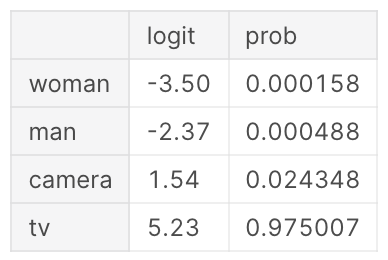Softmax Function

The Softmax Activation Function converts a vector of numbers into a vector of probabilities that sum to 1. It's applied to a model's outputs (or Logits) in Multi-class Classification.
It is the multi-class extension of the Sigmoid Activation Function.
The equation is:
σ(→z)i=ezi∑Kj=1ezj
The intuition for it is that exi is always positive and increases fast, amplifying more significant numbers. Therefore, it tends to find a single result and is less useful for problems where you are unsure if inputs will always contain a label. For that, use multiple binary columns with the Sigmoid Activation Function.
[@howardDeepLearningCoders2020] (pg. 223-227)
Code example:
import numpy as np, pandas as pd
def softmax(x):
return np.exp(x) / np.exp(x).sum()
logits = np.array([-3.5, -2.37, 1.54, 5.23]) # some arbitrary numbers I made up that could have come out of a neural network
probs = softmax(logits)
pd.DataFrame({'logit': logits, 'prob': probs}, index=['woman', 'man', 'camera', 'tv'])
| logit | prob | |
|---|---|---|
| woman | -3.50 | 0.000158 |
| man | -2.37 | 0.000488 |
| camera | 1.54 | 0.024348 |
| tv | 5.23 | 0.975007 |
Softmax is part of the Categorical Cross-Entropy Loss, applied before passing results to Negative Log-Likelihood function.